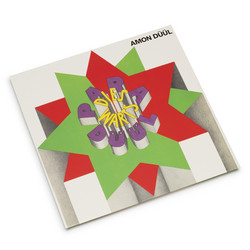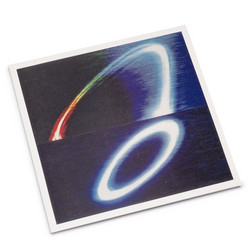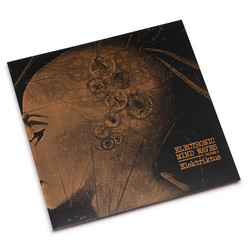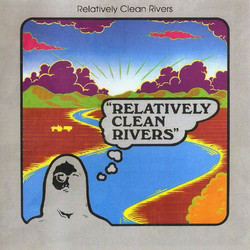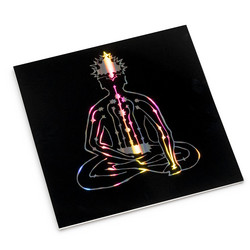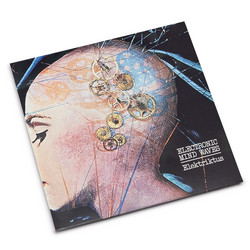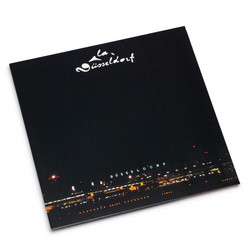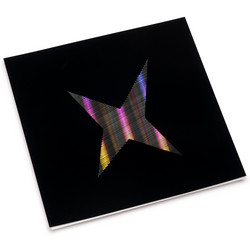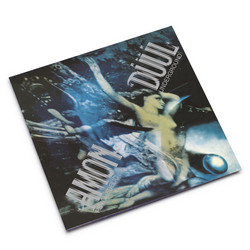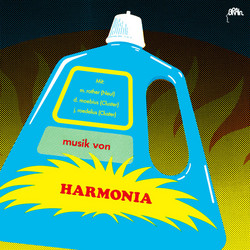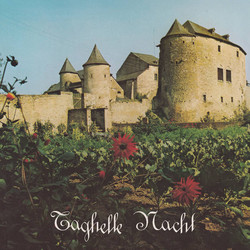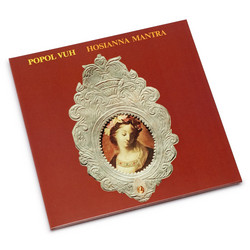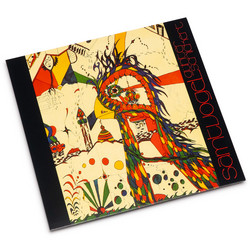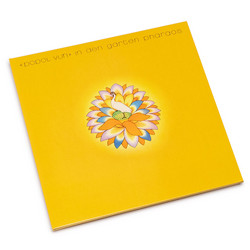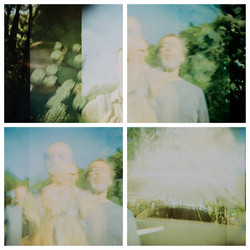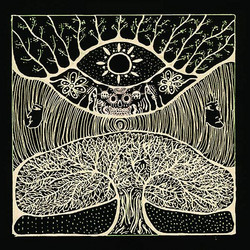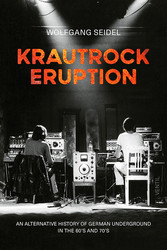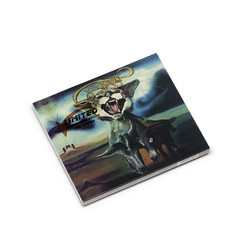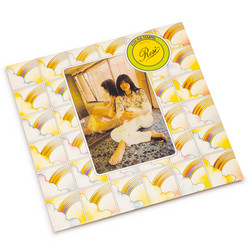Herbert Bodzin
Revival II - The Electronic Tapes 1979-1982 (Lp)
Some artists like Cluster, Tangerine Dream and Klaus Schulze have become quite popular and synonymous with the Kosmische Electronic music that rode the wave alongside the Krautrock explosion, but also nestled within the explosion of creative electronic music emerging from Germany in the early 70s, others have been left in the vaults of obscurity and discovered only by those jumping into their time capsules and searching high and low for some of the less heard acts. And obscure does not mean for one tiny second that any particular artist wasn't worthy of the same heaping praise, it simply means that for one reason or other they didn't catch the attention of the public at large despite displaying totally unique and creative displays of hitherto unprecedented sonicscapes. Hagen based Herbert Bodzin was one of those clever crafty electronic progenitors of wizardry that spent nearly a decade fine-tuning the electronic passions (without ever releasing a proper album), only to disappear into a sea of unheard sound. Bodzin was a synth enthusiast since the early 1970s. He invested a lot of money to purchase the highest end instruments that were available on the market at that time. On “Revival II” we can hear the sounds of legendary machines like the Arp 2600, the Korg PS-3300, the Roland System-700 Modular synthesizer, the PPG Waveterm and the PPG Wave 2.2 as well as classic synths like the Roland Jupiter-8, the Polymoog and the Prophet-5. He was recording on the same equipment used by big names of the German and international avantgarde electronics scene.
“Revival II” features completely unreleased electronic music which was recorded between 1979 and 1982. The recordings – originally entitled “Multi Art – Electronic Sounds” – luckily survived on a cassette tape after an arsonist set fire to Bodzin’s house and burned it to the ground in September of 1986. We already told you the full story about this calamity in the notes to the first volume of “Revival”: Herbert Bodzin, his wife as well as his four children were safe but an incredible array of expensive early synthesizers and studio equipment as well as nearly all of his recordings were irretrievably lost. Bodzin recalls today that he had at least 10 times more recorded material on original reels.
For example, the ambient “Red Ocean” was recorded entirely with the Korg PS 3300. Bodzin, who was also active and primarily known as a visual artist and steel sculptor, originally created the track as background music for slide shows. Today, the PS 3300, which we can also see on the cover artwork, is known as one of the most desired and biggest synths of all time. It was one of the first completely polyphonic synthesizers of which - according to wikipedia - only 50-100 copies were built in its lifetime. Luckily the Korg survived the fire as Bodzin sold it in 1981 to finance newer machines.
The cassette title “Multi Art” was the original name of a band project which additionally featured Bernd Hollendiek, as well as Bodzin’s two sons, Stephan and Oliver Bodzin. Most of the music they performed was completely synthesizer based while Oliver Bodzin played drums on a few tracks. Other tracks are Hebert Bodzin solo recordings. Coming from a jazz background (as you can hear on the first volume of Revival), Bodzin’s compositions were different and unique, featuring diverse styles. The songs are a mixture of mostly ambient, deep, psychedelic, yet experimental and futuristic sounds as well as the more vibrant recordings that featured the complete band with his son Oliver on drums. One of these tracks is “Lifting Blue” which was considered to be the band’s hit. It was recorded in 1980 and qualifies as a unique version of space rock on which Bodzin takes over the lead with long, enduring synth solos. On other tracks like “Voices of the Mind” we hear deep melodies topped with dreamy vocoder voices. “Against the Wall” sounds like it could be taken off of an Italian horror movie soundtrack while the mid-tempo “Orbital” pre-dates the sounds of techno and trance.
Most interestingly, all tracks were live, one-take recordings without any overdubs. Keeping that in mind, it’s almost incredible that the sound is still so massive and powerful. Unfortunately, aside from a couple of live performances on local festivals, the music was never released to the public back then. Bodzin’s long term goal was to publish the best of the songs, but being a father of four kids, he was overworked with his successful business of steel art. Time for finalizing and finishing a complete album back then simply wasn’t available.
The 9 songs on the vinyl version of Revival II as well as the two additional songs on the digital version were first captured from cassette by Mr. Bodzin himself about 10 years ago and restored onto CDr. Since the original tape was lost, we were bound to the audio on CDr. Remastering was tricky due to lots of tape delays and slight hissing sounds which happened through the original audio rip, but we think you will agree that the final result is brilliant and astonishing.
“Revival II” features completely unreleased electronic music which was recorded between 1979 and 1982. The recordings – originally entitled “Multi Art – Electronic Sounds” – luckily survived on a cassette tape after an arsonist set fire to Bodzin’s house and burned it to the ground in September of 1986. We already told you the full story about this calamity in the notes to the first volume of “Revival”: Herbert Bodzin, his wife as well as his four children were safe but an incredible array of expensive early synthesizers and studio equipment as well as nearly all of his recordings were irretrievably lost. Bodzin recalls today that he had at least 10 times more recorded material on original reels.
For example, the ambient “Red Ocean” was recorded entirely with the Korg PS 3300. Bodzin, who was also active and primarily known as a visual artist and steel sculptor, originally created the track as background music for slide shows. Today, the PS 3300, which we can also see on the cover artwork, is known as one of the most desired and biggest synths of all time. It was one of the first completely polyphonic synthesizers of which - according to wikipedia - only 50-100 copies were built in its lifetime. Luckily the Korg survived the fire as Bodzin sold it in 1981 to finance newer machines.
The cassette title “Multi Art” was the original name of a band project which additionally featured Bernd Hollendiek, as well as Bodzin’s two sons, Stephan and Oliver Bodzin. Most of the music they performed was completely synthesizer based while Oliver Bodzin played drums on a few tracks. Other tracks are Hebert Bodzin solo recordings. Coming from a jazz background (as you can hear on the first volume of Revival), Bodzin’s compositions were different and unique, featuring diverse styles. The songs are a mixture of mostly ambient, deep, psychedelic, yet experimental and futuristic sounds as well as the more vibrant recordings that featured the complete band with his son Oliver on drums. One of these tracks is “Lifting Blue” which was considered to be the band’s hit. It was recorded in 1980 and qualifies as a unique version of space rock on which Bodzin takes over the lead with long, enduring synth solos. On other tracks like “Voices of the Mind” we hear deep melodies topped with dreamy vocoder voices. “Against the Wall” sounds like it could be taken off of an Italian horror movie soundtrack while the mid-tempo “Orbital” pre-dates the sounds of techno and trance.
Most interestingly, all tracks were live, one-take recordings without any overdubs. Keeping that in mind, it’s almost incredible that the sound is still so massive and powerful. Unfortunately, aside from a couple of live performances on local festivals, the music was never released to the public back then. Bodzin’s long term goal was to publish the best of the songs, but being a father of four kids, he was overworked with his successful business of steel art. Time for finalizing and finishing a complete album back then simply wasn’t available.
The 9 songs on the vinyl version of Revival II as well as the two additional songs on the digital version were first captured from cassette by Mr. Bodzin himself about 10 years ago and restored onto CDr. Since the original tape was lost, we were bound to the audio on CDr. Remastering was tricky due to lots of tape delays and slight hissing sounds which happened through the original audio rip, but we think you will agree that the final result is brilliant and astonishing.

